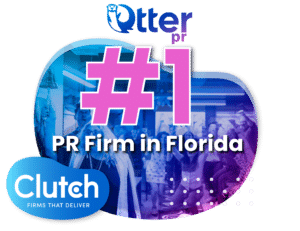While some still think of social media as just another place to share selfies, modern public relations professionals know that the impact of social media platforms such as Facebook, Instagram, TikTok, and Twitter has revolutionized every aspect of their profession.
Today’s top PR agencies are able to expertly integrate social media into their clients’ communications strategies to develop relationships with media outlets, strengthen their messages, and manage their reputations.
Utilizing social media to develop relationships with journalists and influencers
Modern PR professionals regularly interact with journalists, influencers, and media outlets on social channels. This opens the door for a relationship that can be fostered over time — far beyond the standard press release.
To understand social media’s importance in developing these relationships, it helps to look at how PR professionals initiated contact prior to the rise of social media. Before the internet enabled instant communication, public relations pros spent a significant amount of time attending conferences and other networking events in person, exchanging business cards and contact information. If they wanted to reach out to reporters, they usually had to call them or their office directly. And if the journalist didn’t pick up the phone after five rings, that was typically the end of the line.
Today, PR specialists can employ social media channels to follow a writer for The Washington Post or the New York Times. With the right combination of persistence, engaging content, hashtags, and timing, they can easily land a conversation with a valuable point-of-contact at top-tier media outlets.
This use of social media often works effectively for both journalists and those in public relations roles, leading to long-lasting and mutually beneficial relationships. Journalists need to connect with experts in their field, and because PR professionals routinely stay abreast of trending topics and relevant stories, they are best apt to reach out to journalists in search of quotes, interviews, and other insights from their clients who are experts in their respective fields.
PR experts also rely on social media channels to build relationships with influencers for social media marketing campaigns. These content creators gain followers by posting clips on video-sharing platforms or writing niche-specific blogs. Sharing influencers’ posts and engaging with their content often leads to cross-promotion and increased exposure for both parties, but building these relationships requires skill.
PR professionals must remain focused on finding journalists and influencers who cover topics related to their clients’ brands. More importantly, they have to know how to approach the press in a way that does not come across as overtly promotional by diving straight into delivering intriguing stories, helpful information, and relevant news updates that interest the media.
Social media allows PR teams to strengthen clients’ messages with original content
Another way PR professionals use social media is to enhance their clients’ messaging with original, informative, and branded content. Sharing content on social media shows the public what a business is all about and helps to strengthen its authority as a brand. The key is ensuring that every message aligns with the brand’s values, the audience’s expectations, and the PR campaign’s objectives.
PR professionals often employ an expert team of writers and editors to tell a brand’s story, and their branded content for social media can take many forms. For example, it could be an infographic highlighting a company’s values, a blog positioning an executive as an industry thought leader, or a video showcasing a brand’s community involvement. Regardless of how that content takes form, its goal is to employ compelling stories that highlight the core values, culture, and customer connections that make the brand stand out amongst its competitors.
The key to accomplishing this successfully is delivering content that helps create long-lasting relationships and trust between a client’s company, its consumers, and the general public. Establishing that is often best started by posting insightful content on social media platforms that help the brand and its leaders gain credibility and authority.
When customers come across articles, podcasts, and videos in social media posts they feel a strong connection with, they are more likely to engage with it through likes, comments, and sharing it with others. Brands can then engage these new followers with discussions related to the content that drew them to their social media channels. In time, those brands grow to be seen by their consumers and the public as established industry leaders through the positive image they have developed by establishing and growing an audience that comes to them for key information and valuable insight.
Public relations specialists use social media to monitor and manage a brand’s reputation
One of the main benefits of social media platforms is that they allow brands to monitor their public image and followers’ conversations in real-time. Before negative feedback arises, brands can use platforms like Twitter and Facebook as part of their public relations strategy to conduct surveys and polls, engaging directly with customers who have questions via comments or direct messages. This enables them to keep an eye on public opinion, understand their audience better, adapt quickly, and stay ahead of issues.
Social media platforms are an early warning system for negative publicity, as impending crises typically appear first in social media and then spread to the headlines in print or broadcast news outlets. When brands are able to manage negative feedback or comments as it occurs, they remain better equipped to defuse a potential crisis situation with little more than timely and empathetic responses.
The landscape of social media in the modern PR industry is constantly evolving. But when PR professionals are able to use it effectively, they will have the ability to empower their clients to maximize their online footprint by maintaining a positive relationship with the public.
For more tips on using social media effectively in modern media relations, readers can contact the public relations specialists at Otter PR.








